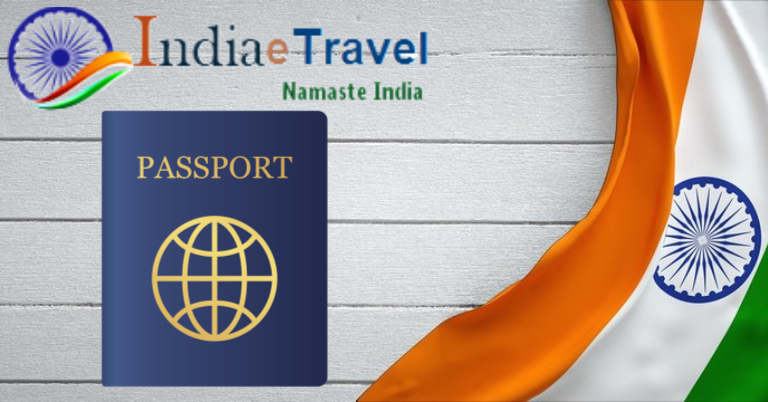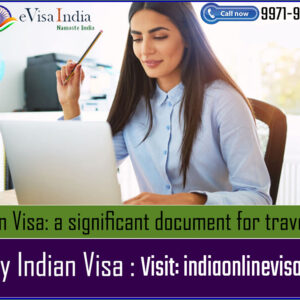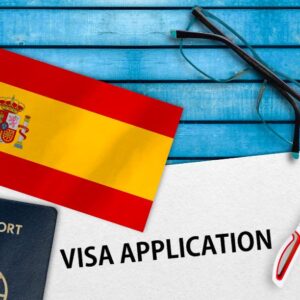India is a land of diverse cultures, rich history, and breathtaking landscapes. Whether you plan to explore its ancient monuments, experience its vibrant festivals, or embark on a spiritual journey, obtaining a visa is an essential step in your travel planning process. In this comprehensive guide, we will walk you through the step-by-step process of applying for an India visa, ensuring a smooth and hassle-free experience.
Before you begin the application process, it is crucial to understand the different types of Indian visas and determine which one suits your purpose of visit. India offers a wide range of visas, including tourist visas, business visas, medical visas, student visas, and more. Each visa category has its specific requirements, validity, and restrictions. Research and identify the appropriate visa type that aligns with your travel plans.
- Understanding the India Visa:
Before you begin the application process, it is crucial to understand the different types of Indian visas and determine which one suits your purpose of visit. India offers a wide range of visas, including tourist visas, business visas, medical visas, student visas, and more. Each visa category has its specific requirements, validity, and restrictions. Research and identify the appropriate visa type that aligns with your travel plans. - Types of Indian Visas:
India offers several visa categories to cater to the diverse needs of travellers. The most common types include:
a) Tourist Visa: This visa is suitable for those visiting India for recreational purposes, such as sightseeing, exploring the country’s cultural heritage, or attending yoga retreats.
b) Business Visa: If you plan to engage in business activities, such as attending conferences, meetings, or exploring business opportunities, the business visa is the right choice.
c) Medical Visa: For individuals seeking medical treatment in India, a medical visa is necessary. It requires supporting documents from recognized medical institutions in India.
d) Student Visa: Students planning to pursue education in India should apply for a student visa. This visa requires an admission letter from an Indian educational institution.
e) Employment Visa: This visa category is for individuals seeking employment opportunities in India. It requires sponsorship from an Indian employer. - Gather Required Documents:
Once you have determined the appropriate visa category, it is time to gather the necessary documents. While the specific requirements may vary depending on the type of visa, some common documents include:
a) Passport: Ensure that your passport is valid for at least six months beyond your intended date of entry into India.
b) Photograph: Recent passport-sized photographs are required. Check the specifications, such as size, background color, and head position, specified by the Indian embassy or consulate.
c) Visa Application Form: Complete the online application form accurately and legibly. Double-check all the information before submitting.
d) Supporting Documents: Additional documents may include flight itineraries, hotel bookings, invitation letters, bank statements, employment letters, or educational certificates, depending on the type of visa. - Online Application Process:
India has introduced a user-friendly online visa application system known as the Indian Visa Online Application System (https://indianvisaonline.gov.in). Follow these steps to apply online:
a) Create an Account: Register on the website and create an account to begin the application process.
b) Fill in the Application Form: Provide all the necessary personal information, including passport details, contact information, and travel plans.
c) Upload Documents: Scan and upload the required documents as per the specifications mentioned on the website.
d) Review and Submit: Review all the information and documents you have provided, making sure they are accurate and complete. Once you are satisfied, submit the application.
e) Schedule an Appointment (if required): Depending on your location, you may need to schedule an appointment at the nearest Indian embassy or consulate to submit your documents in person. Follow the instructions provided on the website to book an appointment, if necessary. - Paying the Visa Fees:
After submitting your application, you will be directed to the payment page. The visa fees vary based on the type and duration of the visa. The payment can be made online using a credit or debit card, or through other accepted methods specified on the website. Once the payment is successful, make sure to save the payment receipt for future reference. - Tracking Your Application:
Once you have submitted your application and paid the fees, you can track the progress of your visa application through the online portal. Use the unique reference number or application ID provided during the application process to check the status of your application. This will give you updates on whether your application is under review, approved, or if any additional documents are required. - Receiving Your Visa:
Upon approval, you will receive your visa via email or as a physical sticker in your passport, depending on the visa category and the embassy’s procedures. Make sure to check all the details on the visa sticker for accuracy before traveling. In case of any errors, contact the respective embassy or consulate immediately for corrections. - Tips and Recommendations:
Here are a few tips and recommendations to enhance your India visa application experience:
a) Apply in Advance: It is advisable to apply for your India visa well in advance of your intended travel date to allow sufficient time for processing.
b) Check the Requirements: Thoroughly review the visa requirements and ensure you have all the necessary documents before starting the application process.
c) Be Accurate and Truthful: Provide accurate and truthful information in your application to avoid any delays or complications.
d) Follow Guidelines: Pay close attention to the specifications and guidelines provided by the Indian embassy or consulate regarding photographs, application forms, and supporting documents.
e) Seek Assistance if Needed: If you have any doubts or concerns during the application process, reach out to the embassy or consulate or seek guidance from a reliable visa service provider. - Visa Interview:
In certain cases, applicants may be required to attend a visa interview at the Indian embassy or consulate. The interview aims to assess the purpose of your visit and verify the information provided in your application. Prepare for the interview by familiarizing yourself with your travel plans, the reason for your visit, and any supporting documents you may need to present. Be confident, honest, and concise in your responses. The interview is usually brief, and a positive outcome will lead to the approval of your visa application. - Visa Extension:
If you wish to extend your stay in India beyond the duration permitted by your visa, you can apply for a visa extension. The extension must be requested before your current visa expires. Visit the Foreigners Regional Registration Office (FRRO) or the Foreigners’ Registration Office (FRO) with the necessary documents, including your passport, visa, and a letter explaining the reason for your extension. The decision to grant an extension is at the discretion of the Indian authorities, and it is important to comply with the immigration regulations to avoid any penalties or difficulties during your stay. - Visa on Arrival:
India offers a visa on arrival facility for citizens of select countries. This option allows travelers to obtain their visa upon arrival at designated Indian airports. However, it is important to note that not all travelers are eligible for this facility, and it is advisable to check the official Indian embassy or consulate website to determine if you qualify. The visa on arrival is typically available for short-term visits and has certain restrictions. Make sure to carry the required documents, such as a passport-sized photograph and proof of onward travel, to complete the visa on arrival process smoothly. - Seek Professional Assistance:
If you find the visa application process complex or if you prefer expert guidance, you can consider hiring the services of a professional visa agency. These agencies specialize in visa processing and can provide personalized assistance, ensuring that all your documents are in order and submitted correctly. They can guide you through the application process, help you understand the requirements, and address any concerns or queries you may have. However, it is important to choose a reputable agency with a proven track record to avoid any fraudulent activities.
Conclusion:
Applying for an India visa requires careful planning, attention to detail, and adherence to the prescribed procedures. By familiarizing yourself with the different visa types, collecting the necessary documents, and following the online application process, you can increase your chances of a successful visa application. Additionally, being aware of the visa interview process, visa extension options, and visa on arrival facility can further enhance your understanding and preparedness. Remember to stay informed, seek assistance when needed, and embark on your journey to India with confidence and excitement.






